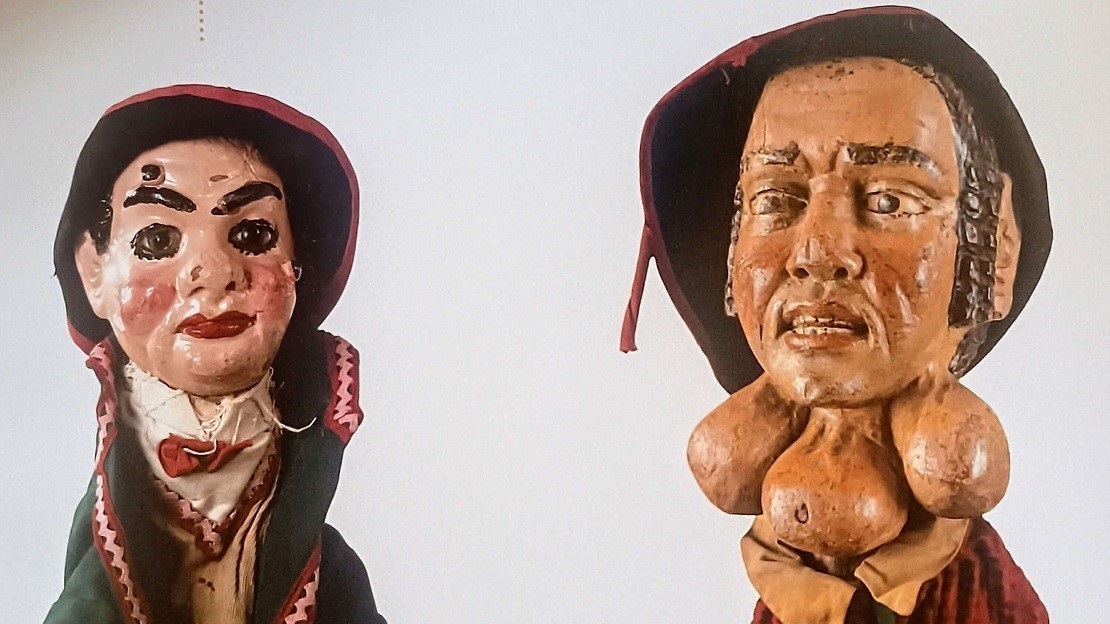Two Italian masks to compare
Carnival, what a great opportunity to learn about italian masks, but not only! Between the 18th and 19th centuries, the Theater and costumes reform favored the creation of ‘regional characters’ instead of masks, to better reflect cultural identity, even linguistic, with the use of local dialect, and geographic origins.
Marionettes and puppets represent a cultural heritage to preserve local identity. The traveling shows aimed to promote and develop the traditional puppet theater sector at national and international level.
The historical importance of these so-called ‘wooden heads’ is often linked to Carnival. Gianduja or ‘Giovanni dal Boccale’ for instance, is the 19th century Turin mask which personifies Piedmontese population, wearing a large cloak and carrying a green umbrella.
How Gianduja is different from Gioppino, accompanied by his stick! Both characters are rough, witty-tongued and fond of their own good regional food and wine, but distinguishable in character and places of origin. They are both symbol and expression of local population’s origin and culture.
The smiling and optimistic Gianduja is forced to emigrate from the province of Asti to Turin, adapting to his people and not to the king! This is how ‘Gianduja character’ is identified: the deep-rooted Piedmontese with a subtle sense of humor, encouraging and very supportive as well.
How similar but different is from Gioppino, the rustic but good mask from Bergamo! Gioppino is armed with a stick to stir polenta, but also useful for defending the weakest, fighting against bad people, and historically, even Austrian invaders!
Apparently, he seems to be lazy and rude, often taking advantages of convivial situations. To tell the turth, he is brave and hard-worker, always keen to help other people.

